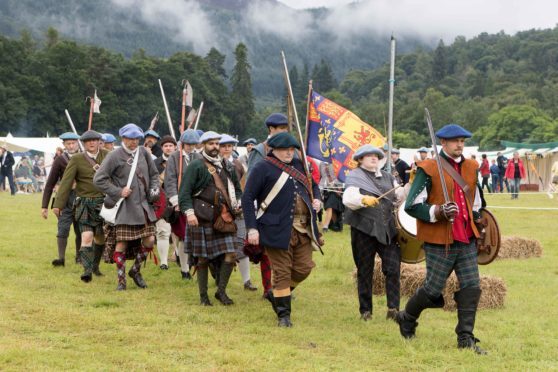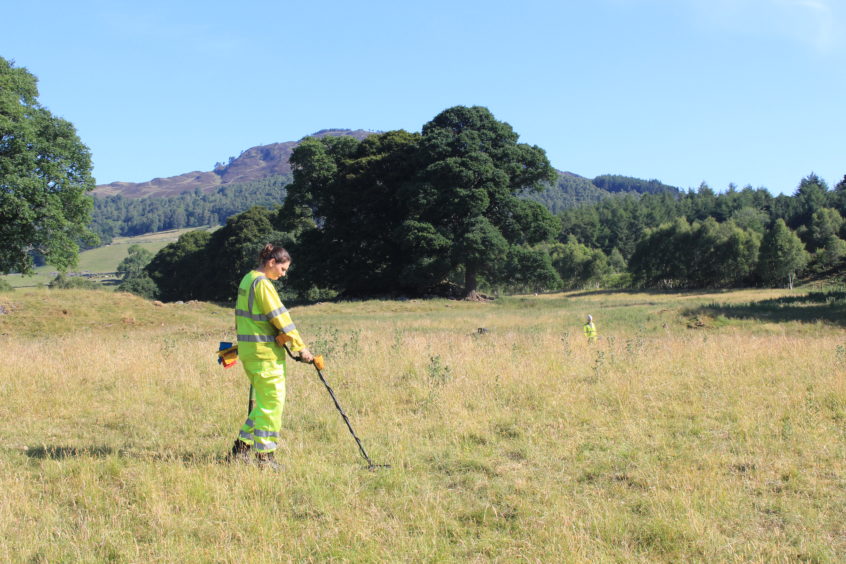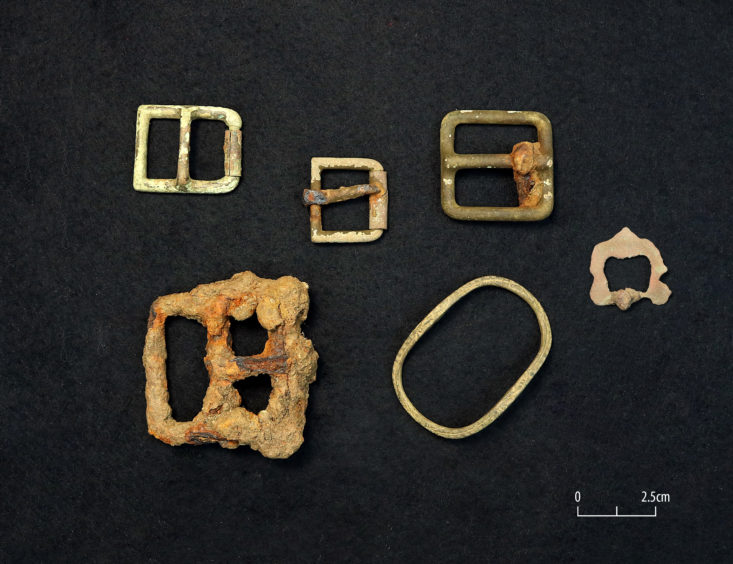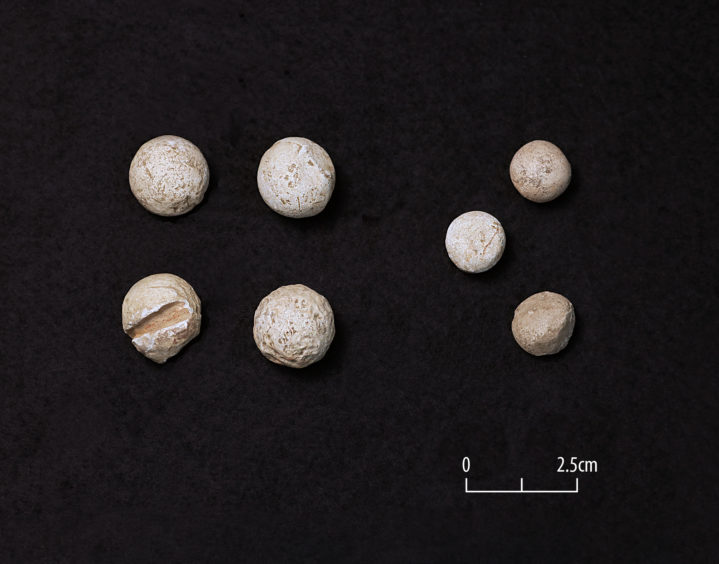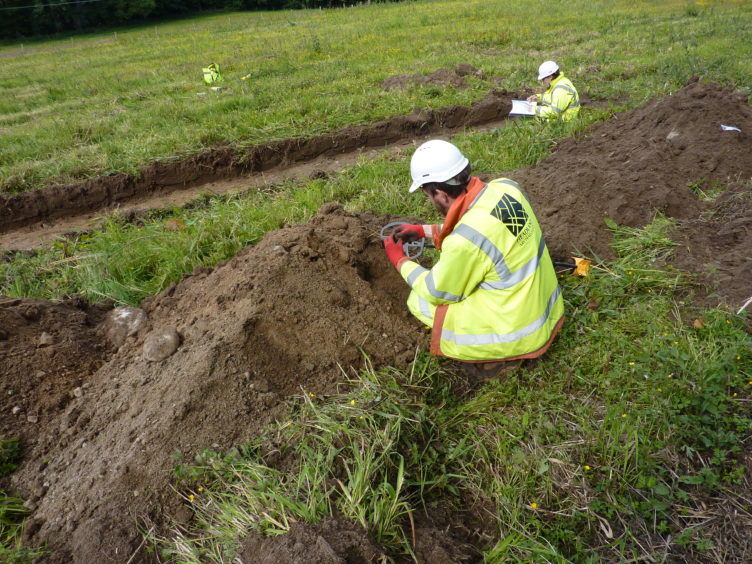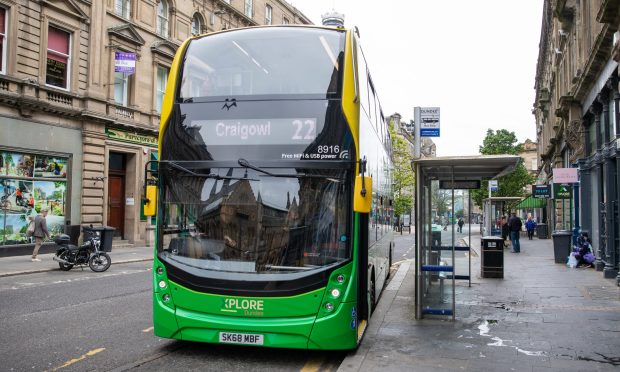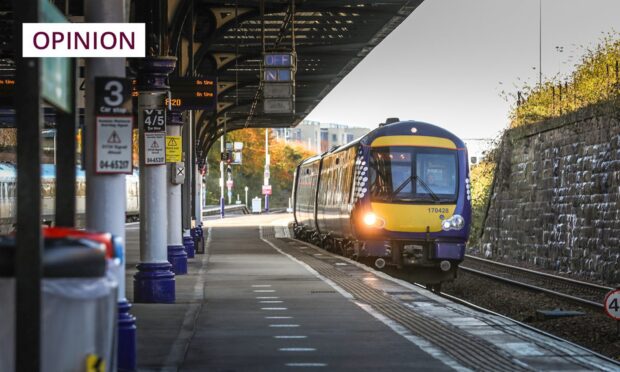Hidden relics unearthed at the site of a 17th century battleground have gone on display, as transport chiefs reveal extra measures to protect the historic site.
The artefacts, including lead shots, buckles and horseshoes, were found at Killiecrankie during an extensive archaeological survey by Transport Scotland.
The area was the scene of a historically significant 1689 conflict between Jacobites and Government troops.
The recent study was carried out as part of preparations to dual the A9 in Highland Perthshire.
Around 44 acres of land was assessed by a team of metal detectorists and more than 1,400 objects were found.
>> Keep up to date with the latest news with The Courier newsletter
Some of the more interesting recoveries went on show at the latest consultation event at Killiecrankie Village Hall on Wednesday.
Transport chiefs have displayed the pieces alongside their revised designs for the controversial A9 route.
More than 180 people objected to the original proposals for the 13-mile Killiecrankie to Glen Garry section.
>> Keep up to date with the latest news with The Courier newsletter
Historical recreation group the Soldiers of Killiecrankie had warned that the £3 billion dualling work could “obliterate” parts of the old battlefield site.
Transport Scotland said it had revised its design to reduce land take following feedback from locals and Historic Environment Scotland.
These include reducing the length of the slip road at the new Aldclune junction, while steepening earthwork slops in the section between the Allt Girnaig and the walled garden of Urrard House.
A spokesman for the roads authority said: “We are aware of the sensitivities of the Killiecrankie battlefield and have engaged extensively since 2012 with the local community and key stakeholders as the design of the dualling scheme for the Killiecrankie-Glen Garry section has progressed.
“These public information events are a sign of our continued commitment to this engagement.”
He said: “Having published our draft orders for the scheme in November, we received a number of objections and we are currently working to resolve these wherever possible.
“We have been working to minimise the land take from the dualling on the battlefield and we are seeking feedback from the public on the design refinements on display, which will be used to inform the ongoing refinement work.”
The spokesman added: “Following local concerns and comments from Historic Environment Scotland, we recently undertook archaeological investigations within the battlefield.
“No archaeological remains were identified within the road line or by the trial trenching, and the possible burial pits were confirmed to be natural features.
“The investigations did recover more artefacts which furthers our knowledge of the 1689 battle.”
